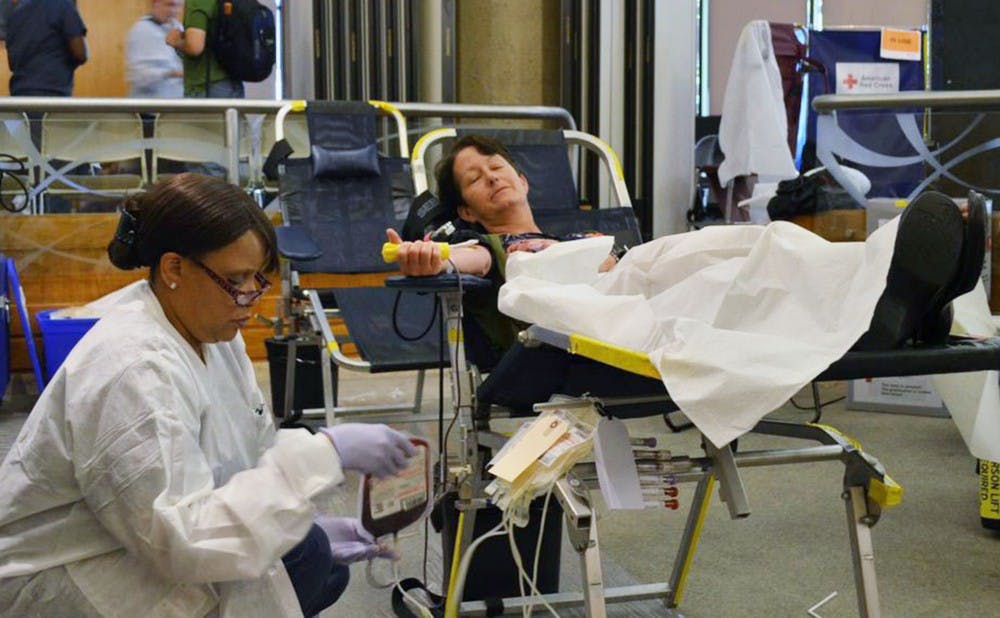Following a blood shortage that spanned the summer months, Duke Hospital and the American Red Cross hosted a blood drive Wednesday to contribute their part to saving lives.
The drive—which took place in the Medical Center's Mudd Building—occurred at a time when the Red Cross has reported an 8 percent decrease in blood donations over the past three months. The organization classified the shortage as "urgent" in July. Duke organizers planned to collect at least 82 pints of blood from more than 100 people.
Red Cross sites must collect approximately 15,000 blood donations every day provide for patients at more than 2,700 hospitals and transfusion centers across the country.
“The need is always great,” said Joelle Parlor, team supervisor and charge nurse who supervised the event. "People use blood every day.”
Set up in the middle of a lecture hall, the donation center had beds, donation processing machines and screening centers.
The drive collected blood from people with all blood types, although certain types, including O and B negative, are particularly valuable, Parlor said.
Donated blood is used to help a wide variety of people, from surgery to chemotherapy patients. Despite this constant need for blood supplies, Parlor said only about 5 percent of people donate blood. Most blood donors present at the drive had given blood before, Kuwlow added.
“Maybe we’ll get three to four new donors in a drive.” she said. “Not a lot of people do it.”
Some donors present at the event had been donating for years or even decades. Durham resident David Smithwick said he had probably donated blood over 100 times since his early 20s. Another Durham resident, Leah Vallario, said she had donated blood many times since joining her mother as a donor in high school.
“It’s an easy way to give,” Vallario said. “It’s really easy.”
Leah's mother, Phyllis Vallario, accompanied her to Wednesday's drive. Phyllis, who works in an intensive care nursery, said she wanted to give her blood because it was type O negative—which can be given to anyone, including infants.
“I know my babies really need my blood,” Phyllis Vallario said.
Both Kulow and Leah Valario said that most fears or concerns about giving blood are likely exaggerated.
“I guess some people are nervous to do it because a lot of people don’t like needles,” Leah Valario said. “But I find it’s less painful than you anticipate.”
Donors give blood, “very much like in a doctor’s office,” said Nancy Kulow, a volunteer with the Red Cross who signed in donors.
Before giving blood, donors must go through a private screening process involving a series of questions, a vital signs test and a blood iron test. The actual blood donation takes only 10-15 minutes. Donors are given snacks and supervised for a short time afterward to ensure proper recovery.
Additional blood drives will be held at Duke in the Law School on Sept. 9 and in the Bryan Center on Sept. 16 and 17.
Get The Chronicle straight to your inbox
Signup for our weekly newsletter. Cancel at any time.

